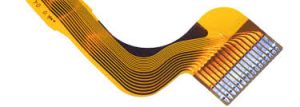Flexible PCBs and Flexible Displays
Flexible PCBs and Flexible
A flexible PCB is a printed circuit board that can be bent and shaped, making it ideal for a variety of applications, such as the display in your phone or laptop. It can also be used in wearable electronics like smartwatches, health trackers and even medical devices.
As technology becomes increasingly portable, consumers demand more functionality from electronic devices. The ability to bend and shape a flexible PCB to the contours of the human body allows these devices to be worn without having to compromise on size or durability. These features, as well as a variety of other benefits, have made flexible pcb the preferred choice for many different consumer electronics and medical gadgets.
Compared to rigid PCBs, flexible circuits have more layers and require a higher level of engineering design. As a result, they are generally more expensive to manufacture. However, there are ways that you can decrease the cost of your flex PCB design. For example, you can use a manufacturer calculator to find out how much your design will cost. Using a detailed calculator can help you understand how to create a cost-efficient flex PCB design.
The most common type of flexible printed circuit board is a single-sided flexible circuit, which consists of a single conductor layer on a flexible dielectric film. This is the cheapest option available, and can be produced with minimal material waste. Double-sided flex circuits are more costly, but offer enhanced power-handling capabilities and higher circuit density.
While flex circuits are already indispensable across major industries, they continue to unlock innovative new applications that drive future technologies. From robotics to flexible displays to energy solutions, flexible PCBs are at the forefront of cutting-edge developments.

Flexible PCBs and Flexible Displays
In robotics, the flexibility of a flex PCB makes it possible to design intricate robot limbs and grippers that mimic natural movement. The circuits in these devices must be able to fit in tight spaces and withstand the stress of constant motion. As a result, the flexible components in these devices are designed to withstand repeated soldering cycles and high temperatures.
Flex PCBs are also vital to the development of wearable electronics, which can monitor and analyze a user’s physiological signals to detect early signs of disease. This capability, combined with the flexibility of a flex circuit, has made these devices essential to the fight against the COVID-19 pandemic.
In addition to the standard flex PCBs offered by PCBway, you can also choose to have stiffeners added to your design. Stiffeners are rigid materials (usually FR4) that are added to selected areas of the flex PCB for additional mechanical stability. As a result, this option will increase your manufacturing cost. You can also opt to have electrical testing done on your flex circuit, which is based on a final inspection perspective and helps to ensure that the circuit board is free of faults before it goes into production. This will also add to the overall cost of your order.
Another significant failure mode is environmental factors, including temperature extremes, moisture, and chemical exposure. Flexible PCBs may be deployed in harsh environments where they are exposed to high temperatures, humidity, or corrosive substances. These conditions can accelerate material degradation, leading to insulation breakdown, solder joint failures, and corrosion of conductive traces. Employing protective coatings, sealing techniques, and selecting appropriate substrate materials can help mitigate the impact of environmental factors on flexible PCBs.